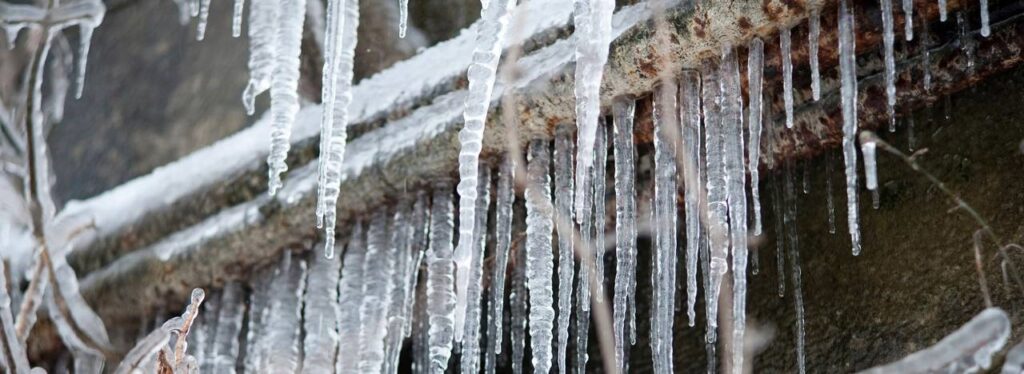Shielding Pipes from Cold Weather Issues: Critical Tips
Shielding Pipes from Cold Weather Issues: Critical Tips
Blog Article
The content down the page relating to How to Prevent Your Pipes From Freezing is fairly fascinating. You should take a look.
:strip_icc()/snow-outdoor-faucet-pipes-4af65d1e5e904fb1aa7bf74071fe5d89.jpg)
Winter can damage your pipes, especially by freezing pipes. Right here's how to prevent it from happening and what to do if it does.
Introduction
As temperature levels drop, the threat of frozen pipelines rises, possibly leading to pricey repair work and water damage. Understanding just how to stop icy pipes is crucial for home owners in chilly environments.
Prevention Tips
Insulating susceptible pipes
Wrap pipelines in insulation sleeves or utilize warm tape to shield them from freezing temperatures. Concentrate on pipes in unheated or outside areas of the home.
Heating strategies
Maintain interior spaces adequately heated up, specifically locations with pipes. Open closet doors to allow cozy air to distribute around pipelines under sinks.
Just how to determine icy pipes
Search for lowered water flow from taps, uncommon smells or sounds from pipelines, and noticeable frost on revealed pipes.
Long-Term Solutions
Architectural modifications
Consider rerouting pipes far from exterior walls or unheated areas. Include extra insulation to attics, cellars, and crawl spaces.
Updating insulation
Purchase high-quality insulation for pipelines, attics, and wall surfaces. Proper insulation helps keep constant temperatures and minimizes the risk of icy pipes.
Safeguarding Outside Plumbing
Yard hoses and outside taps
Separate and drain garden tubes prior to winter season. Mount frost-proof spigots or cover outside faucets with shielded caps.
Recognizing Icy Pipelines
What triggers pipes to freeze?
Pipes freeze when exposed to temperatures below 32 ° F (0 ° C) for prolonged periods. As water inside the pipes ices up, it broadens, taxing the pipeline walls and potentially creating them to break.
Dangers and damages
Frozen pipelines can result in water supply interruptions, residential property damage, and costly repairs. Burst pipelines can flood homes and create extensive structural damage.
Indications of Frozen Piping
Determining icy pipes early can prevent them from rupturing.
What to Do If Your Pipelines Freeze
Immediate actions to take
If you think frozen pipelines, maintain taps available to relieve pressure as the ice melts. Use a hairdryer or towels soaked in warm water to thaw pipelines gradually.
Final thought
Preventing frozen pipes requires aggressive measures and quick actions. By comprehending the reasons, indicators, and preventive measures, house owners can shield their pipes during cold weather.
5 Ways to Prevent Frozen Pipes
Drain Outdoor Faucets and Disconnect Hoses
First, close the shut-off valve that controls the flow of water in the pipe to your outdoor faucet. Then, head outside to disconnect and drain your hose and open the outdoor faucet to allow the water to completely drain out of the line. Turn off the faucet when done. Finally, head back to the shut-off valve and drain the remaining water inside the pipe into a bucket or container. Additionally, if you have a home irrigation system, you should consider hiring an expert to clear the system of water each year.
Insulate Pipes
One of the best and most cost-effective methods for preventing frozen water pipes is to wrap your pipes with insulation. This is especially important for areas in your home that aren’t exposed to heat, such as an attic. We suggest using foam sleeves, which can typically be found at your local hardware store.
Keep Heat Running at 65
Your pipes are located inside your walls, and the temperature there is much colder than the rest of the house. To prevent your pipes from freezing, The Insurance Information Institute suggests that you keep your home heated to at least 65 degrees, even when traveling. You may want to invest in smart devices that can keep an eye on the temperature in your home while you’re away.
Leave Water Dripping
Moving water — even a small trickle — can prevent ice from forming inside your pipes. When freezing temps are imminent, start a drip of water from all faucets that serve exposed pipes. Leaving a few faucets running will also help relieve pressure inside the pipes and help prevent a rupture if the water inside freezes.
Open Cupboard Doors
Warm your kitchen and bathroom pipes by opening cupboards and vanities. You should also leave your interior doors ajar to help warm air circulate evenly throughout your home.

We hope you liked our excerpt on Preventing and dealing with frozen pipes. Many thanks for spending some time to read through our article post. Liked our entry? Please quickly share it. Let someone else check it out. We thank you for your readership.
Visit My Website Report this page